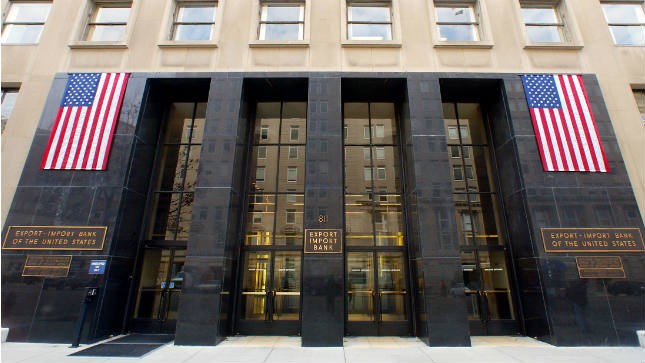As my devoted readers know, especially those who have read my magnum opus “The JOB Messiahs”, we have suffered a long train of economic atrocities inflicted by bumbling bureaucrats who imagined they were creating Economic Development (Ecodevo for short). Forty years of local economic history show that they have produced the exact opposite of what they promised.
A mere microcosm
But Coos Bay’s experiences with Ecodevo, sad as they are, are only a microcosm of what’s been going on in bigger places, for at the state and federal levels too, you bump into the appalling achievements of the Ecodevo-crats. In 1973, while Coos Bay was being converted to the Ecodevo cult, the State of Oregon created its own Ecodevo Department. Apparently Oregon was anxious to follow the example of the other states who already had Ecodevo departments, the first one of which, Michigan’s, dated back to 1947. Perhaps our state lawmakers should have checked the success of Michigan’s Ecodevo department since then. Despite numerous reorganizations, name changes and new Ecodevo programs, Michigan has only stagnated and declined, with an unemployment rate often the highest in the nation. Detroit, formerly the automobile capital of the world, resembles the abandoned industrial centers of the former USSR which, by the way, had even more confidence in its economic planners than either Michigan or Oregon – or Coos Bay.
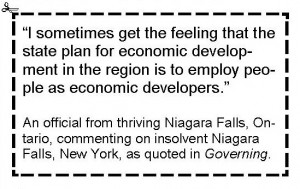 Ignoring all of that, Oregon’s new Ecodevo Department started promising easy loans to local Ecodevo outfits like the Port of Coos Bay, which promptly used them to build fish plants that went bankrupt, a T-dock that was supposed to attract large fish plants but never did, a barge slip that would draw heavy steel construction but never did, and more. All that “infrastructure” was supposed to produce lease payments for the Port, which then would use that money to repay the state’s loans. But without the expected lease payments, by the early 1980s the Port ran into serious financial trouble. The only reason it avoided bankruptcy was the state’s subsequent generosity with loan forgiveness. Such forgiveness, which is prohibited by the state constitution, was likely inspired by the Salem Ecodevocrats’ wish to keep their own jobs. If the beneficiaries of your largesse are failing, quiet forgiveness is wiser than making an example of them. What if some intelligent members of the legislature draw the right conclusions and abolish your own jobs as well? It’s too horrible to contemplate.
Ignoring all of that, Oregon’s new Ecodevo Department started promising easy loans to local Ecodevo outfits like the Port of Coos Bay, which promptly used them to build fish plants that went bankrupt, a T-dock that was supposed to attract large fish plants but never did, a barge slip that would draw heavy steel construction but never did, and more. All that “infrastructure” was supposed to produce lease payments for the Port, which then would use that money to repay the state’s loans. But without the expected lease payments, by the early 1980s the Port ran into serious financial trouble. The only reason it avoided bankruptcy was the state’s subsequent generosity with loan forgiveness. Such forgiveness, which is prohibited by the state constitution, was likely inspired by the Salem Ecodevocrats’ wish to keep their own jobs. If the beneficiaries of your largesse are failing, quiet forgiveness is wiser than making an example of them. What if some intelligent members of the legislature draw the right conclusions and abolish your own jobs as well? It’s too horrible to contemplate.
In any case, the net result of all that multilevel Ecodovo activism was that quietly and gradually, Coos Bay became the only place on the entire Oregon coast that was hemorrhaging business, population and jobs. For students of economic history, it was the predictable result of giving power to a bunch of know-it-all economic dictators. While Michigan had Detroit, Oregon had Coos Bay, the Detroit of the Oregon coast, with a waterfront in shambles and abandoned homes everywhere. But still the Ecodevocrats, led by the Port, marched on. The Port’s latest achievements have been a resurrected, unneeded railroad that prevents all redevelopment of our dilapidated waterfront, plus more than ten years wasted while hoping for an LNG terminal that, like many earlier pipe dreams, is likely to fall through due to changing market conditions.
“A Slush Fund for Megacorporations”
While it is clear that local as well as state Ecodevocrats have done us little good but much harm, we have not yet considered the federal Ecodevocrats, because the feds started down that road even before Michigan had thought of it.
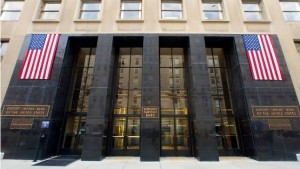 One of the federal Ecodevo initiatives dates from 1934, when an executive order by FDR created the Export-Import Bank (Ex-Im Bank). This was at a time, in the middle of the Great Depression, when every country in the world was trying to promote exports as a way to improve its faltering economy.
One of the federal Ecodevo initiatives dates from 1934, when an executive order by FDR created the Export-Import Bank (Ex-Im Bank). This was at a time, in the middle of the Great Depression, when every country in the world was trying to promote exports as a way to improve its faltering economy.
The purpose of the Ex-Im Bank, as stated in its charter, was to offer loans and loan guarantees to small American businesses that wanted to export their products but had limited access to credit. For instance, in order not to stress his overseas customers’ cash flow, a typical exporter might like to offer terms calling for payment in 60 or 90 days, or even longer. Until such payment is received, Ex-Im Bank finances the purchase or guarantees a bank loan; and of course all this is intended to create jobs in America. That original idea still applies, even if (according to the Heritage Institute) by 2012 only a mere 0.52 percent of small-business exporters used Ex-Im Bank’s services.
It is the fate of many government agencies to be “captured” by the industries they serve; and the Ex-Im Bank has gradually become, according to former U.S. Rep. Dennis Kusinich, “a slush fund for a handful of well-connected megacorporations.” Kusinich said that because 87% of Ex-Im Bank’s loans and loan guarantees have been going to giants like Boeing, General Electric and Caterpillar . . . all companies quite capable of seeing to their own financing needs.
Moreover, it often turns out that the claim that Ex-Im Bank financing creates American jobs doesn’t hold much water. One Ex-Im Bank defender cited the example of the South-African state-owned railroad company Transnet purchasing locomotives from General Electric. Thanks to Ex-Im Bank’s assistance, General Electric could offer Transnet much longer payment terms than the 90-day ones; in fact, Transnet would become Ex-Im Bank’s debtor, not General Electric. But General Electric predicted that its sale to Transnet would create jobs at the company and its suppliers.
But when GE did enter into a locomotive deal with Transnet in March 2014, they agreed to manufacture major parts of the locomotives in South Africa, which Transnet estimated would create about 30,000 indirect and direct domestic jobs — in South Africa.
And just as is the case with the tax breaks that our local politicians routinely hand out to any business interested in coming here, nobody checks if the Ex-Im Bank subsidies were what really closed the deal. No doubt Ex-Im Bank loans and loan guarantees have reduced the cost of credit and the financial risk for General Electric and Boeing and Caterpillar and the like. That’s because Ex-Im Bank’s loans come with lower interest rates, and Ex-Im Bank loan guarantees induce commercial lenders to shave their interest rates too, since there is no risk involved; should the buyer default, the taxpayers will be on the hook. But would these transactions not happen without the Ex-Im Bank?
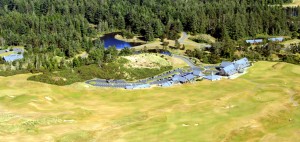 Whenever somebody makes that kind of claim, consider the source, because we have experience with sources in Coos Bay. It’s only thanks to the unexpected frankness of a few corporate executives that we know that our tax incentives did not persuade thriving Bandon Dunes, or now-deceased Oregon Resources Corp., or not-yet-built Jordan Cove, to come here. True, they didn’t turn down the offered subsidies; they’d be fools to have done that. But their reason for coming to Coos Bay was something else. For Bandon Dunes it was a stretch of land that would make a spectacular golf course. For ORC it was a vein of chromite ore. And for Jordan Cove it was a bunch of local Old Boys so possessed by the Ecodevo mania that they were willing to ignore the people’s objections to a facility that nobody else on the coast wanted.
Whenever somebody makes that kind of claim, consider the source, because we have experience with sources in Coos Bay. It’s only thanks to the unexpected frankness of a few corporate executives that we know that our tax incentives did not persuade thriving Bandon Dunes, or now-deceased Oregon Resources Corp., or not-yet-built Jordan Cove, to come here. True, they didn’t turn down the offered subsidies; they’d be fools to have done that. But their reason for coming to Coos Bay was something else. For Bandon Dunes it was a stretch of land that would make a spectacular golf course. For ORC it was a vein of chromite ore. And for Jordan Cove it was a bunch of local Old Boys so possessed by the Ecodevo mania that they were willing to ignore the people’s objections to a facility that nobody else on the coast wanted.
For the Ex-Im Bank, things are not basically different. When in recent years several scandals gave traction to a Congressional movement to abolish it, the bank brought all kinds of big guns to the Congressional hearings to help justify its existence. Among them were Boeing executives who testified that without the Ex-Im Bank, the company’s existence was in doubt. But they failed to convince the Congress.
You gotta have a constituency
Many moons ago, while strolling down the lofty halls of Oregon’s state government, I overheard a couple of Salem insiders discuss the impending abolition of a small state agency. The reason for this rare event, one of them explained with a smirk, was that this particular agency didn’t “. . . have a constituency”.
What this meant was that, since every government agency wants to live forever, it must create dependents who will help justify its existence. Apparently that particular endangered agency had failed to create such dependents. And so, with mutual winks, the people discussing its looming extinction agreed that creating a constituency was every government bureaucrat’s duty, and perhaps the most important one.
In plain terms, a constituency is a bunch of people who are determined to mooch off a government department’s activities, even if its value to the people at large is dubious or negative. Those people may come from all walks of life and may make all kinds of improbable claims about the agency’s indispensability to human progress. Besides all of the agency’s employees and their relatives and friends, they may include office equipment dealers, landlords, bankers, insurance providers, caterers, etcetera, but especially those who have benefited from the agency’s official favors, whether financial or regulatory.  These are the folks who spend much of their so-called business careers raising their hands at official hearings and testifying to their favorite agency’s importance to the people’s health and welfare, the nation’s prosperity, world peace, the international order, perhaps even life on earth – all while keeping mum about their private interests in that agency’s perpetuation. While mouthing their pious platitudes they also keep quiet about the fact that many members of the government committee they are addressing belong to the agency’s constituency too. That’s because the longevity of many a politician’s career is enhanced by his generosity with the taxpayers’ money, channeled through the very same agency that’s being discussed. In Coos Bay that applies not just to local politicians but also to the Ecodevocrats at the Port and SCDC, all of whom get campaign contributions and/or endorsements from the local businesses whose subsidies they have “facilitated”. It also explains why those politicians and Ecodevocrats staunchly maintain, against all known evidence, that it was their subsidies that brought those new businesses to Coos Bay.
These are the folks who spend much of their so-called business careers raising their hands at official hearings and testifying to their favorite agency’s importance to the people’s health and welfare, the nation’s prosperity, world peace, the international order, perhaps even life on earth – all while keeping mum about their private interests in that agency’s perpetuation. While mouthing their pious platitudes they also keep quiet about the fact that many members of the government committee they are addressing belong to the agency’s constituency too. That’s because the longevity of many a politician’s career is enhanced by his generosity with the taxpayers’ money, channeled through the very same agency that’s being discussed. In Coos Bay that applies not just to local politicians but also to the Ecodevocrats at the Port and SCDC, all of whom get campaign contributions and/or endorsements from the local businesses whose subsidies they have “facilitated”. It also explains why those politicians and Ecodevocrats staunchly maintain, against all known evidence, that it was their subsidies that brought those new businesses to Coos Bay.
The usual fallback argument of the Ecodevocrats is their claim that, even if subsidies have not brought in anybody new, they have “saved” or “preserved” existing local jobs. As one example, we have heard many vague, undocumented claims that local lumber mills, particularly Roseburg plywood in Coquille and Georgia-Pacific in Bunker Hill, were saved by the Port’s resurrection of their railroad connection to Eugene. The trouble is, nobody has ever made a financial case for that claim, before or after the railroad’s acquisition; and I have reviewed all the known documents.
Moreover, after its original operator, CORP, quit running trains in 2007, those mills survived for five years without railroad service. If during my forty years in Coos Bay anything has impressed me about the lumber business, it has been its readiness to close up shop as soon as it became unprofitable. But during all those years without trains, those mills kept running. That their bottom line improved slightly once rail transportation became available again is quite plausible, but that doesn’t prove it was essential.
The Ex-Im Bank’s Preliminary Demise
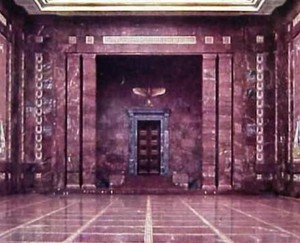 “Americans for Prosperity” (AfP) is a free-market activist organization backed by the Koch brothers, whose mere mention evokes intense fear and loathing in progressive circles. So it may come as a surprise that last month the Kochs’ AfP honored congressman Jeb Hensarling (R-Texas) for his leadership in killing the Export-Import Bank. After a great deal of wrangling, on June 30 Congress allowed the bank’s charter to expire, thus ending the 80-year life of a government agency few people except insiders had heard of . . . but a notorious example of corporate cronyism and welfare for billionaires.
“Americans for Prosperity” (AfP) is a free-market activist organization backed by the Koch brothers, whose mere mention evokes intense fear and loathing in progressive circles. So it may come as a surprise that last month the Kochs’ AfP honored congressman Jeb Hensarling (R-Texas) for his leadership in killing the Export-Import Bank. After a great deal of wrangling, on June 30 Congress allowed the bank’s charter to expire, thus ending the 80-year life of a government agency few people except insiders had heard of . . . but a notorious example of corporate cronyism and welfare for billionaires.
Speaking of billionaires, even though progressives and liberals and leftists condemn all forms of “hate”, they seem to have no qualms about directing intense hate at the Koch brothers who back AfP. Blinded by this hate, much of which is generated by Democratic Party hacks, they are overlooking two things. One is that that the causes they themselves favor receive generous financial support from other billionaires, like George Soros, Tom Steyer, James Simons, and many more. The other thing they sadly overlook is that despite their boogeyman-image as puppet masters of the Republican Party, the Koch brothers have supported many causes, economic as well as political, that are anathema to the Republican Party but popular among the left. Among the economic causes is the fight against corporate welfare through such organizations as AfP and the Cato Institute. An early example of a political cause dates from 1968 when Charles Koch broke with his father, a well-known John Birch Society member, to publicly oppose the Vietnam war. Ten years later he publicly derided the Republican Party as a crony capitalist outfit that favored “business accommodation and partnership with government”; in other words, he condemned the Republicans for favoring a fascist economic system, which is philosophically accurate. And in 1980 his brother David Koch, running for vice president on the Libertarian Party ticket, advocated the legalization of abortion, prostitution and homosexuality and the repeal of drug laws, in addition to attacking Ronald Reagan as a hypocrite. Besides these peculiarities seen as virtues by the left, the Kochs’ personal habits are not ostentatious. According to a recent book by Daniel Schulman of Mother Jones, who did not interview the brothers themselves, “Koch Industries employees often spot Charles Koch “. . . in the cafeteria, tray in hand and waiting patiently in line at the ‘healthy choice’ station.”
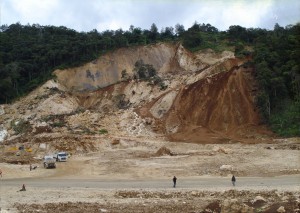 As Flip Wilson once said about the devil: “Nobody’s all bad.”
As Flip Wilson once said about the devil: “Nobody’s all bad.”
And with regard to the Kochs’ support for the murder of the Ex-Im Bank, I might also mention that other Ex-Im opponents include Elizabeth Warren and Bernie Sanders. I have found no record of the Kochs’ AfP honoring them, but they should have. It takes fortitude to take on your party establishment, especially when both the Republican and the Democratic “leadership” were solidly pro-Ex-Im Bank, no doubt for the extensive opportunities for cronyism that it offered, and both were indignant about its demise. Congress being Congress, they may yet find a way to revive the stinking corpse.
Ex-Im Bank and LNG
During its octogenarian life Ex-Im Bank had built a D.C. headquarters whose architecture recalls the imposing style of Hitler’s Berlin Chancellery (long since reduced to rubble by the U.S. 8th Air Force). Sucking up to Kusinich’s “megacorporations” had also enabled Ex-Im Bank to build a powerful constituency, always ready to come and argue for its preservation. But finally, after so many years, that constituency lost the battle. Jeb Hensarling’s award was well deserved, although in truth, Ex-Im Bank had facilitated its own demise. One of the abuses revealed by Hensarling was that the bank had made loans to Russian companies, at a time when sanctions on Russia were in effect.
It also had come to light that during the last three years of its life, Ex-Im Bank officials had exceeded their travel budget by $3 million, because they had gone all around the country to drum up political support for themselves. This generated another furor among the anti Ex-Im Bank activists. But there was a great deal more. In 2010 it was found that Exxon had paid close to $100,000 to have four Ex-Im Bank executives travel to Papua New Guinea (PNG) to help them “study” whether to approve $3 billon in Ex-Im financing for a big LNG export plant in that country (The official name of the facility is PNG LNG, and its total cost after cost overruns was about $19 billion.) They had traveled by way of London and Tokyo, all in business class, viewed the project’s route by chartered aircraft and “were entertained by costumed villagers”. Recalling old National Geographic pictures of New Guinea natives leads me to believe that those costumes could not have cost Exxon very much, but obviously the rest of the trip had. And it stands to reason that, once you’ve been entertained royally by your generous hosts, remaining neutral about their financing needs becomes problematic, to say the least. The $3 billion that Ex-Im Bank approved with a year afterward was the biggest transaction since its founding in 1934. I quote from Bloomberg:
“The Papua New Guinea-project will supply fuel to China, Japan and Taiwan, according to Exxon. The venture calls for a 430-mile (692-kilometer) pipeline that would cut through tropical forests and run undersea, and a liquefaction plant near the capital of Port Moresby.”
“Fraud and reputational risks”
A small geographical note: New Guinea is a very large island located in the southern hemisphere, north of Australia. Its western half is part of Indonesia while since 1975 its eastern half has been an independent country called Papua New Guinea, hence PNG. 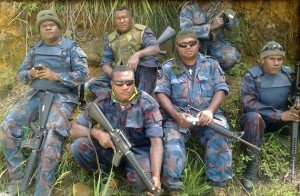 It is a very hot place with a lot of mountains and jungles and tropical rain and tribal populations just emerging from the stone age. The latter has not disqualified them to act as “police” for the Exxon venture, or more accurately as a paramilitary force to intimidate natives who object to having their land taken for PNG LPG’s 430-mile pipeline. That pipeline is a story in itself, since during the night of January 23/24, 2012, a mountain above a quarry used by a contractor to obtain limestone for the project collapsed, covering a native village called Tumbi and burying at least twenty-seven people alive. Despite promises by the government, their remains have never been found, nobody has been compensated, and no causes for the landslide have been identified. I should qualify that last statement, because it is known that a company investigation has occurred. But the company has ignored all requests to publish it. And in May 2014 its first LNG shipment left from Port Moresby to Japan.
It is a very hot place with a lot of mountains and jungles and tropical rain and tribal populations just emerging from the stone age. The latter has not disqualified them to act as “police” for the Exxon venture, or more accurately as a paramilitary force to intimidate natives who object to having their land taken for PNG LPG’s 430-mile pipeline. That pipeline is a story in itself, since during the night of January 23/24, 2012, a mountain above a quarry used by a contractor to obtain limestone for the project collapsed, covering a native village called Tumbi and burying at least twenty-seven people alive. Despite promises by the government, their remains have never been found, nobody has been compensated, and no causes for the landslide have been identified. I should qualify that last statement, because it is known that a company investigation has occurred. But the company has ignored all requests to publish it. And in May 2014 its first LNG shipment left from Port Moresby to Japan.
The Ex-Im Bank has an “Inspector General”, who issued a report on the New Guinea venture the following month. It can be comical to read this purposely dull verbiage that amounts to painting Ex-Im-Bank as careless morons, and PNG LNG as a den of crooks:
“. . . we observed that the overall level of character, reputational and integrity due diligence conducted for this transaction could have been more comprehensive to protect Ex-Im Bank from potential fraud and reputational risks. It did not fully vet the directors of the project owners, nor other relevant persons and entities connected with the project. In addition, the OIG was unable to validate the origin of $576.9 million of local costs financed by the bank. . . .”
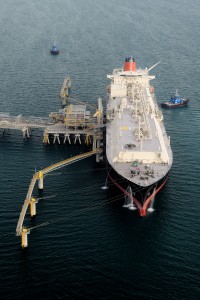 In other words, more than half a billion Ex-Im dollars had greased palms and filled pockets, but nobody will ever know whose. The IG also mentioned that the Ex-Im Bank had failed to hedge against foreign exchange risks, which is incredible for an institution whose core function is the financing of foreign transactions. But that failure alone had “contributed $2.1 billion to the (b) (4) cost overrun.” When I looked up (b) (4), I found nothing there except the line: “(Confidential and Proprietary Information)”. But an investigative article in The Nation of April 30, 2014 contains enough anecdotal evidence of bribery, strong-arm tactics, fraud en theft to make me wonder if we shouldn’t have our own Inspector General to conduct a financial investigation of Coos Bay’s Good Old Boys who so uncritically swallow everything Jordan Cove puts on their plates.
In other words, more than half a billion Ex-Im dollars had greased palms and filled pockets, but nobody will ever know whose. The IG also mentioned that the Ex-Im Bank had failed to hedge against foreign exchange risks, which is incredible for an institution whose core function is the financing of foreign transactions. But that failure alone had “contributed $2.1 billion to the (b) (4) cost overrun.” When I looked up (b) (4), I found nothing there except the line: “(Confidential and Proprietary Information)”. But an investigative article in The Nation of April 30, 2014 contains enough anecdotal evidence of bribery, strong-arm tactics, fraud en theft to make me wonder if we shouldn’t have our own Inspector General to conduct a financial investigation of Coos Bay’s Good Old Boys who so uncritically swallow everything Jordan Cove puts on their plates.
LNG, LNG everywhere
It’s not as if Ex-Im Bank had no experience in financing LNG export plants. Prior to the PNG LNG project the bank had financed plants in Algeria and Brunei, both of which have been exporting LNG to Europe and Japan. And in Qatar, currently the world’s largest LNG exporter with some 80 million tons annually, the Ex-Im Bank financed two LNG projects back in 1996 plus a third one in 2004.
But wait! There is more! Evidently encouraged by its PNG LNG experience, the
Ex-Im Bank has been making more LNG loans in that same part of the globe: Australia. In 2012 Conoco Phillips and Bechtel Power Co. received a $2.95 billion loan for their Australia-Pacific LNG project, which aims to ship LNG gained from coal seams from the coast of Queensland, in northeastern Australia. And at the end of that year the bank made a $1.8 billion loan to yet another terminal in Queensland. These plants will start shipping LNG to China and Japan well before Jordan Cove turns its first shovel, as will new plants located off Australia’s northwestern coast. Those new plants had no Ex-Im Bank involvement. Altogether, by the end of this decade Australia expects to have added 62 million tons of capacity to its existing terminals, which until recently gave it an export capacity of about 20 million tons. The new additions will enable Australia to replace Qatar as the world’s leading LNG exporter, and there are plans for yet more terminals.
Now, we are entitled to ask a question to which there are two possible answers. That question is: Did the Ex-Im Bank’s financial aid to the global LNG industry make a difference in how much LNG capacity has been built, and is still being built? Two possible answers:
- No, those terminals would have been built anyway, but perhaps at slightly higher cost;
- Yes, Ex-Im Bank financing made a real difference.
If 1. is the correct answer, (as we suspect is the case with most or all “development” subsidies), then there was no real need for Ex-Im Bank involvement.
If 2. is the correct answer, then Jordan Cove has the Ex-Im Bank to thank for the current and future glut of LNG that has a 90% chance of making its Coos Bay terminal unviable. LNG is a worldwide commodity, and commodities swing from sellers’ markets to buyers’ markets and back, although the timing of those swings is never certain. What is certain is that high prices inspire commodity producers to invest in productive facilities, while low prices discourage such investments. At present, several factors – slackening demand in Asia, Russian gas pipeline expansions, and above all the near-simultaneous coming on stream of new suppliers in Australia, New Guinea, the U.S. Gulf coast, and several other places – all these in combination have already reduced LNG prices in east Asia to half of what they were just a couple of years ago; and it was such LNG prices that inspired the current LNG export building boom in the first place.
Today’s LNG market amounts to about 250 million tons a year. Additional worldwide production capacity now in the works amounts to 140 million tons, of which about 60 million is being built in the U.S., mainly along the Gulf Coast. That extra capacity is plenty to meet the world’s needs until 2022, according to Wood Mackenzie, a gas and LNG research company. Nevertheless, “companies are still moving forward with plans to put another 100 million tonnes per year of LNG capacity into construction over the next 18 months.”
If those additional 100 million tons are built on top of the 140 already in the works, together they will double current global LNG capacity, thus prolonging the LNG glut and keeping prices down longer. “We’re expecting a number of postponements or cancellations,” Wood Mackenzie admits, but they caution: “Postponement could invalidate contracts for the portion of project LNG sold so far, and jeopardize hard-won stakeholder support, including from local communities.”
Maybe those LNG promoters are playing a game of chicken, always hoping that somebody else will get cold feet and bow out first, so they can pick up their contracts. To the best of my knowledge, Jordan Cove itself has no signed contracts yet, and 20-year contracts for most of a terminal’s capacity are essential for obtaining financing. And you can’t count on the Ex-Im Bank any more.
What’s Jordan Cove’s game?
I also wonder if, in that game of chicken, Jordan Cove/Veresen is being either ignorant or deceptive about their prospects and about their competition. On April 17 of this year Vern Wadey, Jordan Cove VP, made a presentation to the Canadian Oilmen’s Association in Calgary, touting JC’s prospects including its “strong local and political support”. Even so, the printout of his talk contains an entire page of self-protective legalese including this little gem: “Readers should not place undue reliance on the information contained in this presentation.” That is quite true, especially in light of the map Mr. Wadey showed to the collected Canadian oilmen. This map, which is reproduced here, shows “supply prospects” of LNG, or in plain words: competition for Jordan Cove. The orange dots are pre-2010 LNG export terminals, the blue ones “emerging” ones, built or being built after 2010.
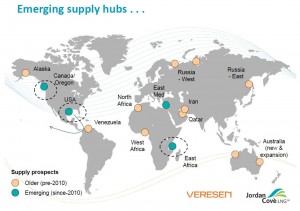 Since Jordan Cove’s prospects have always been east Asian countries (its plan to export LNG to Hawaii, never very firm, was recently quashed by that state), it seems fair that for JC’s competition we only consider LNG-exporting countries at a favorable distance to China, Japan, Taiwan and South Korea. And to identify those we turn to the Jordan Cove-produced map of “supply hubs” that Mr. Wadey showed to his audience.
Since Jordan Cove’s prospects have always been east Asian countries (its plan to export LNG to Hawaii, never very firm, was recently quashed by that state), it seems fair that for JC’s competition we only consider LNG-exporting countries at a favorable distance to China, Japan, Taiwan and South Korea. And to identify those we turn to the Jordan Cove-produced map of “supply hubs” that Mr. Wadey showed to his audience.
But strangely, that map shows no LNG suppliers in New Guinea, even though we know Exxon’s plant in the eastern half of that island started shipping last year. Moreover, the western half of New Guinea, the part with the bird head, has a working LNG terminal too; and Indonesia, to which that part of New Guinea belongs, has other terminals besides. In fact, Indonesia has been shipping LNG since 1977, and has been one of the world’s top LNG exporters. Most of Indonesia consists of the islands west of New Guinea’s bird head. The next country, to the north of Indonesia, is Malaysia; and it’s also a major LNG exporter, in the same class as Nigeria and Indonesia with roughly 20 million tons annually.
Australia has been exporting similar amounts, but as I discussed this is about to rise steeply because of the new terminals. But strangely, Australia lacks the blue dots that signify new LNG capacity, another omission.
Why would Veresen/Jordan Cove put out such obviously false, or at any rate, misleading information? Here’s a choice of short answers:
Maybe they’re ignorant.
Maybe they’re conniving.
Or maybe they’re desperate.

